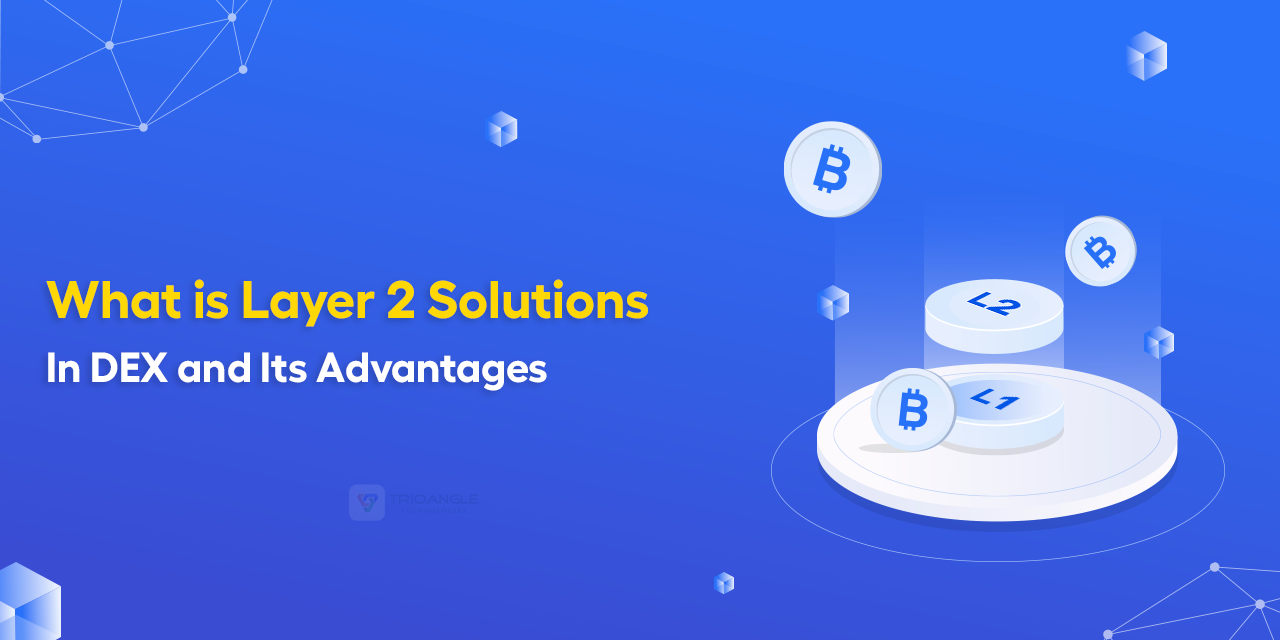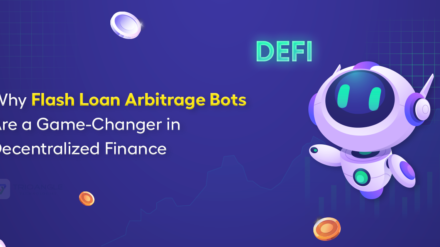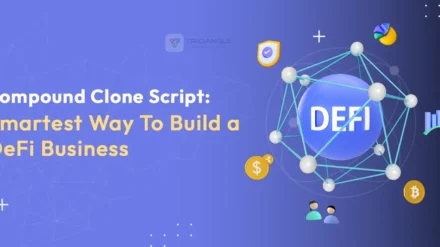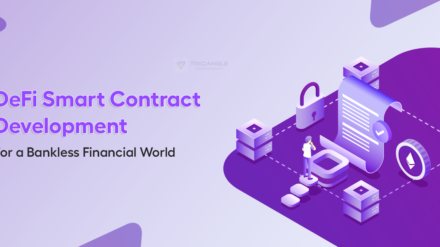The cryptocurrency trading sector has developed significantly over the years. In the past, users preferred centralized platforms to trade cryptocurrencies. Many were unaware of decentralized exchanges (DEXs), but as they began to use these platforms, the situation became fully opposite. Today, most users prefer decentralized exchanges (DEX) over centralized ones. But why? These platforms allow them to make anonymous and highly secure trading. Yet, the increased user base at DEX results in high gas fees and slower transaction speed for users. This is where Layer-2 solutions come in to eliminate these barriers.
In this blog, let’s explore what Layer 2 solutions are, how they benefit decentralized exchange platforms, and more, in simple terms.
Let us take a glimpse at layer-1 blockchain solutions to make it easier to understand layer-2 solutions.
Layer 1 Blockchain Solutions – An Overview
Layer 1 blockchains serve as the base for the blockchain network. This layer contains the core setup and rules to handle transactions, verify data, and maintain consensus. Ethereum and Bitcoin are the greatest examples of layer 1 blockchain solutions. In simpler terms, this layer creates the groundwork to help the network operate efficiently and provides primary support for the whole blockchain ecosystem.
Alright. Now is the perfect time to explore layer-2 solutions. So let’s jump in.
What is Layer 2 Solutions
Layer 2 solutions in blockchain are designed to fix the issues seen in the layer 1 blockchain networks. They mainly focus on increasing scalability, reducing gas fees, and speeding up crypto transactions.
You may already know that the Ethereum (layer 1 solution) is highly robust and secure, but it lags in speed and has high gas fees when the network is too busy. Here, layer 2 solutions help this network by giving extra space to make transactions.
Layer-2 solutions are built on top of Layer-1 solutions. A Layer-2 solution creates a private space for a group of users to conduct transactions efficiently. Once all transactions are completed in the private space, they are finalized and recorded on Layer 1. This process helps reduce the load on the Layer-1 solution, increases transaction speed, and enables users to make transactions with lower gas fees.
Let me give you a real-world example to make it more understandable.
Imagine you’re in a busy coffee shop. You place your order, but unfortunately, there’s only one cashier and a long line of people standing ahead. Now you feel more frustrated when the line moves slowly. But, how will it be when the shop suddenly opens another billing counter? Your order will be taken more quickly, and you can get your coffee without waiting too long.
That’s exactly what layer 2 solutions do. It takes some of the tasks and helps the blockchain network work more freely.
Well, let’s take a look at layer 2 solutions.
Types Of Layer 2 Solution In DEX
There are different types of Layer 2 solutions for DEXs, and each one improves the transactions in its own way. Let me explain all of them for you in simpler terms.
Let me list the types first, then we take a deeper look.
- Rollups
- Optimistic Rollups.
- ZK-Rollups.
- Side Chains
- State Channels
Now let’s dive deeper into each of its types.
1. Rollups
In Layer 2 blockchain scaling, rollups work by making transactions away from the main chain and then combining the transaction data into batches to upload to the Layer 1 blockchain.
Let me give an example to make it easier for you.
Imagine you are mailing a letter. Instead of sending each letter separately, a post office collects thousands of letters and delivers them in bulk. This method saves a lot of time and cost. This is what rollups do—they bundle all the transactions that happen off-chain and submit them in the main blockchain at once.
So, this leads to less traffic in the chain and helps to process transactions more effectively.
I hope you understand. These Rollups come in two main types.
Optimistic Rollups
The optimistic rollups assume all the transactions are valid; they only verify them when someone raises disputes. This approach speeds things up but includes a waiting period for security reasons.
ZK – Rollups
ZK Rollups are also known as zero-knowledge rollups. It uses special cryptographic proofs to verify transactions instantly. This helps to make faster and safer transactions.
Large and well-known decentralized exchange platforms like Uniswap and dYdX leverage these ZK-Rollups to provide a better trading experience for their users.
2. Sidechains
Sidechains are separate blockchain systems that link to the main blockchain. They are designed to improve scalability and facilitate communication in the blockchain ecosystem. It uses a two-way peg mechanism to transfer assets between the mainchain and sidechain.
Here’s a simple example for easy understanding.
Think of a sidechain as a separate lane next to the busy road. It lets vehicles (transactions) go faster without being caught in traffic jams (network congestion) on the main road (main blockchain). After travelling through the sidechain, the vehicles (transactions) can join back onto the highway (main blockchain) easily.
3. State Channels
State channels facilitate user transactions outside of the blockchain (off-chain), and these transactions are recorded on the main chain only when the channel is closed.
Here’s an easy-to-understand example for state channels in layer 2 solutions.
Imagine you’re visiting a coffee shop frequently, so the shop provides special rules for you. Instead of paying for each coffee one by one, they allow you to settle the total bill at the end of the day. Similarly, the State channel lets two people conduct many transactions off the blockchain and only writes the final total on the blockchain. This speeds up the process, but users must coordinate closely during the transaction process.
How Layer 2 Solutions Power Decentralized Exchange Platforms
The layer 2 solutions improve the overall efficiency of the decentralized exchange platforms. Here’s how:
1. Quicker Transaction
With the capability of layer 2 solutions, the DEX can handle thousands of transactions per second (TPS) easily. It’s more efficient and faster than Ethereum, which is limited to 15-30 transactions per second. With layer 2 blockchains, trades can be completed almost instantly rather than taking several minutes or hours.
2. Lower Gas Fee
The layer 2 solutions lower the gas fee on DEXs by facilitating most of the transactions off-chain. Instead of each trade fighting to get space on the network, the transactions are grouped and recorded on the blockchain. This approach significantly reduces the gas fee for crypto exchange platforms.
3. Greater Scalability
With layer 2 blockchain solutions, the decentralized exchange platform (DEX) can accommodate more users without network issues. Even a new trader can engage the platform without worrying about the high gas fees and delays.
4. Better User Experience
The layer 2 blockchain network enables a fast, smooth, and economical trading experience for the Decentralized exchange traders. They don’t need to worry about failed transactions or higher costs. They can trade without any hassles.
Next, let’s move forward and explore the advantages of layer 2 solutions now.
Advantages Of Layer 2 Solutions In DeFi
Layer 2 goes beyond improving DEXs; it changes the entire decentralized finance (DeFi) environment. Here’s how:
- With reduced fees and faster transactions of layer 2 solutions, all traders on DeFi have access, not only those who have more money to trade.
- When the DeFi protocols have more traders, it results in increased liquidity and less price slippage.
- It helps users access any kind of DeFi solutions, such as lending platforms and NFT marketplaces, without the stress of high transaction fees.
Well, we have come to the end of our topic “What is layer 2 solutions in DEX and its advantages “. It’s time to wrap up.
Wrapping Up
In summary, the layer 2 solutions are like a missing puzzle piece that makes decentralized exchanges (DEXs) more effective. They tackle major issues seen in the DeFi ecosystem, such as slow transactions, high cost, and scalability problems, without compromising on its security.
If you’re an entrepreneur who wants to launch a scalable DEX using layer 2 solutions, then Trioangle Technologies provides everything you need. As a leading decentralized exchange development company, we have specialized in crafting efficient and high-performing platforms.
Are you ready to build a next-level DEX with layer 2 solutions? Contact us today!





